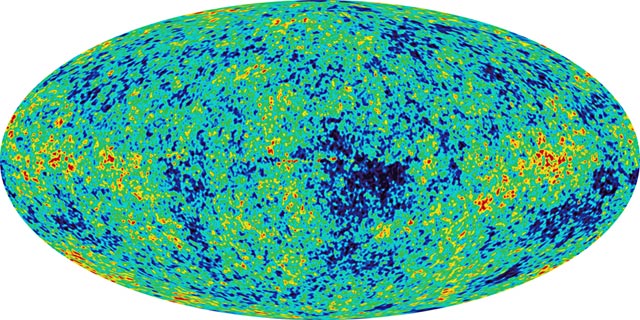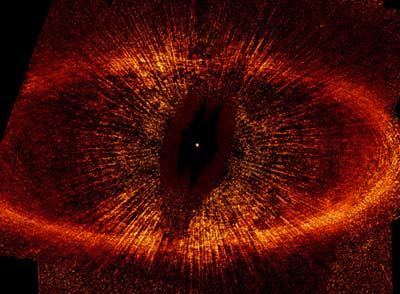
Big news and bold statements are issuing forth from Greenbelt, MD. “We’ve now laid the cornerstone of a unified cosmic theory…We have not answered all the questions. But we’ve certainly turned a corner.” Thanks to NASA and the Wilkinson Microwave Anisotropy Probe (WMAP), scientists now have visual evidence of the universe’s origins with which to test out all the prevailing cosmological theories. Great news! Not only is any new empirical data in this field a boon to science, but, if ridiculous amounts of new information are gleaned from just this one little probe…well, it won’t help NASA in the manned space department, but the agency could still use a few unmitigated victories these days. On another note, looking at this map brings back some old memories. For my high school science thesis (required at SCGSSM), I used similar COBE DMR data to figure out that early galaxies displayed a fractal distribution. (Hey, it was the early ’90’s – fractals were the rage.) I wonder if this new data bears out that old rinky-dink thesis.
 “Concealed within his fortress, the Lord of Mordor sees all. His gaze pierces cloud, shadow, earth and flesh. You know of what I speak, Gandalf — a Great Eye, lidless, wreathed in flame.”. (Via Supercres.)
“Concealed within his fortress, the Lord of Mordor sees all. His gaze pierces cloud, shadow, earth and flesh. You know of what I speak, Gandalf — a Great Eye, lidless, wreathed in flame.”. (Via Supercres.)
